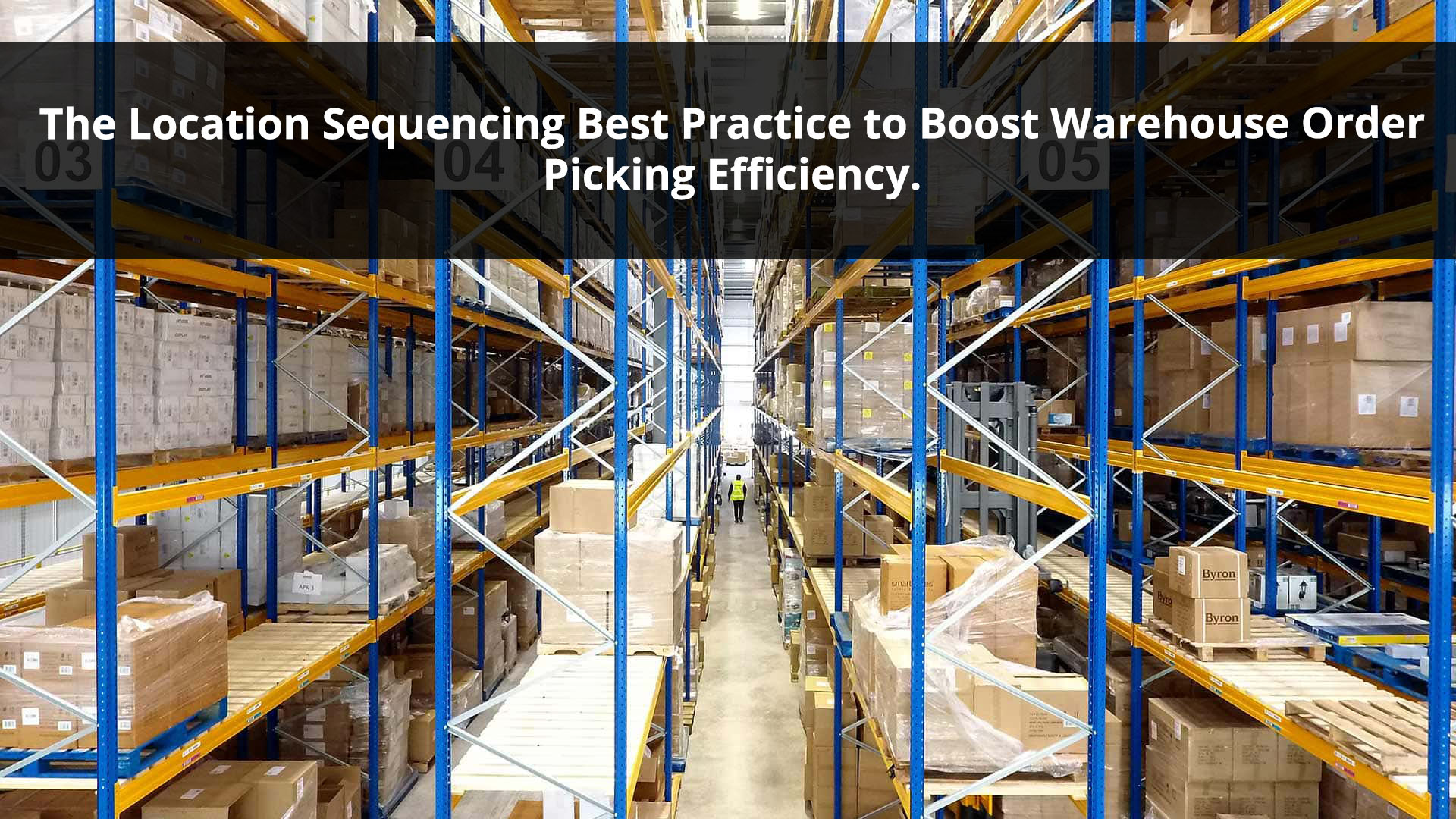The Sequencing Best Practice to Boost Warehouse Order Picking Efficiency
This best practice is known as location sequencing. It means that when you are configuring your locations for picking purposes, replenishment, and for put-away purposes in the reserve area in the top level position. While doing this you would have picked the naming convention to streamline the picking.
On top of it there is also the ability to configure something called as the location sequencing. It means that you do not want your pickers to the same location twice which is also known as zig-zagging. Optimizing the picking process will make your picking operators to walk less. Unproductive labor such as unproductive walking due to skipping does not directly translate to picking. The more you pick the more you can ship, the more you ship the more you can invoice and the more you invoice, the more money you make.
It’s important to follow the location sequence as it makes everything optimum. I’ve seen in some WMS where while they are picking from the current location, especially in the path where they’re walking through and then picking something like a batch picking process, they could not only see their current location where they are picking. They could even see the next location where they have to go and based on that they could even skip aisles if there are no picks in that aisle.
There is no point in going through that aisle even though the picker takes that path. It makes it even more efficient if your picks little sporadic and not dense. I mean that’s difficult to control as it’s all based on the order that’s coming. With ABC velocity SKUs you can control it to some extent but it’s not going to be always perfectly controllable. From a put away perspective after building the pallets the receiver can go to the reserve area and can drop-off the every case according to the location sequence. If you have to tweak the location sequence based on the slotting optimization you can also plan accordingly, that would be beneficial.

Put a pedometer on your pickers and then measure one of the distances that they are walking. They are walking all day which means that miles and miles of distance. Looking at that data and then making sure that the location sequence is followed will make the picking process more optimum. Making sure that they are picking faster and minimizing the walk time in doing the picking will help you in making the picking process optimum. This is something that I’ve done in my WMS implementation all the time and that’s a standard practice and that’s the method I was amazed to see in other distribution centers where they didn’t have this and where people are picking by tribal knowledge. They pick every time when they’re looking at the picking location like “this is where I need to go next, I mean in the paper picking process. The locations are listed in sequence and that they follow that sequence.
These processes are not always done and it’s something simple that you could do quickly and get some good gains out of your picking. The gains of efficiency from your picking process is something to think about. Hopefully this is helpful and please let us know your comments in the section below.
Do subscribe to our YouTube Channel.


 1. Increases EPP, using budgeted line items.
1. Increases EPP, using budgeted line items. Millennial friendly technology, less onboarding time, very easy adoption – touch screen keypad, and 43% of Millennials already use IOS, familiar with Facetime, 85% of Millennials aged 18-24 own devices and 86% aged 25-34 own them, consume a lot of video on their smartphones, and are highly comfortable with this medium, they understand and like apps.
Millennial friendly technology, less onboarding time, very easy adoption – touch screen keypad, and 43% of Millennials already use IOS, familiar with Facetime, 85% of Millennials aged 18-24 own devices and 86% aged 25-34 own them, consume a lot of video on their smartphones, and are highly comfortable with this medium, they understand and like apps.